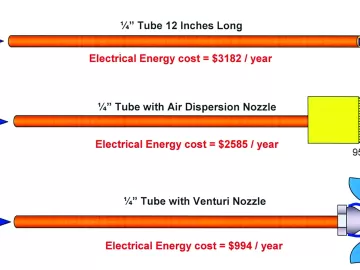Big Improvements at a Small Sawmill
Spruce Products Limited operates with five separate compressed air systems in their various buildings. A few years ago a sharp-eyed air compressor service representative noticed the screw compressors on site had less than optimal loading to operating hours ratios. Recognizing this was a problem, he suggested the company get in touch with their local power utility for a free compressed air scoping assessment. As a result, SPL has optimized two of their compressed air systems to-date, saving significant operating costs. One system is operating at 86% less energy consumption than previous levels.












